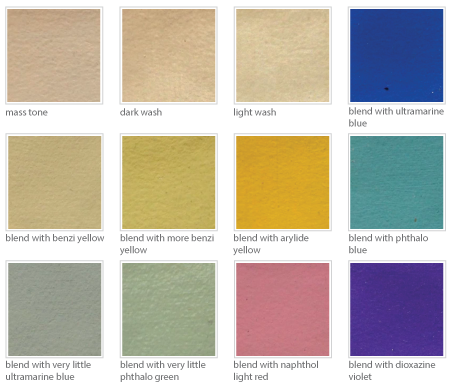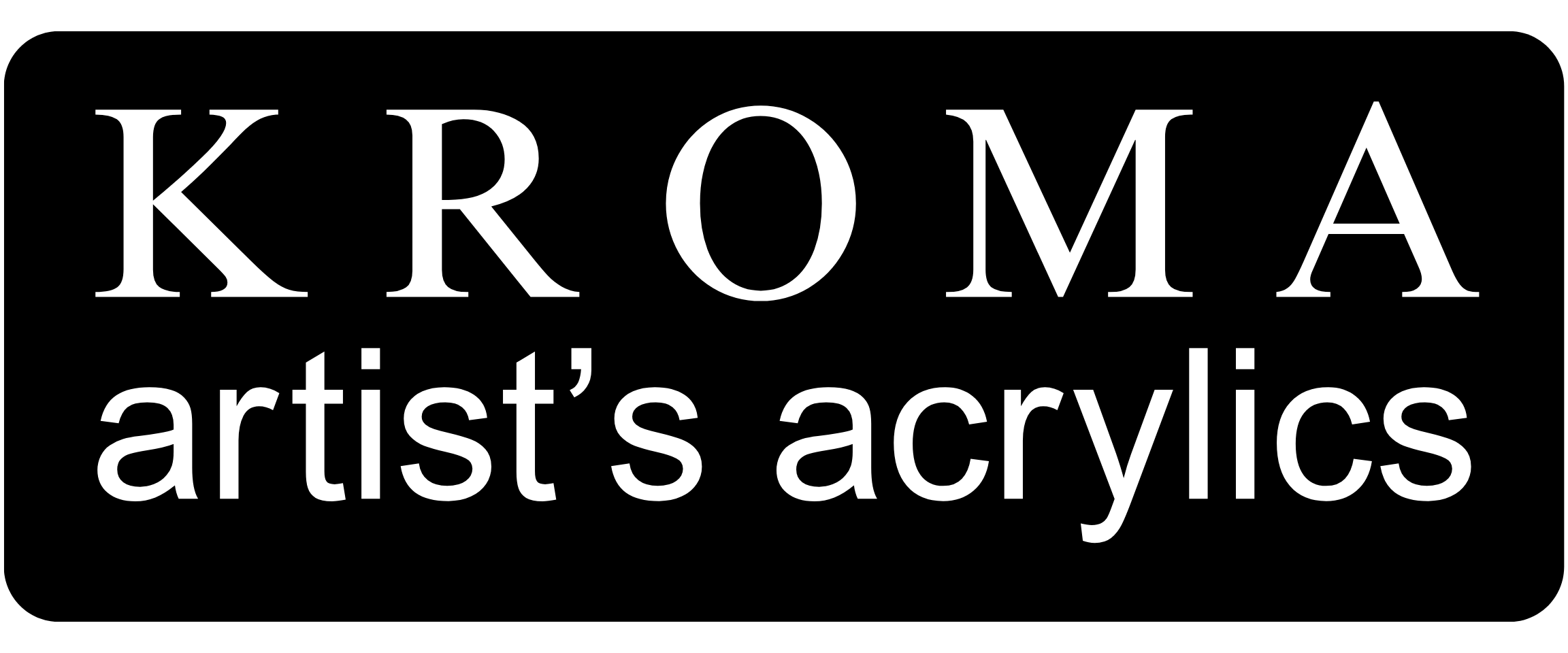Using Different Whites: Titanium White vs. Zinc White
Zinc white is a more transparent pigment than titanium white. Because light can pass through zinc white particles, they allow coloured pigment particles in the mix to be more visible. Using titanium white to lighten colours produces a more "pastel" effect because more of the colour is blocked by titanium's opaque particles, producing a mix that has better hiding qualities, but less saturated colour. Both titanium and zinc white have excellent lightfastness ratings.

Titanium white has much greater hiding power than zinc white. As well as being more opaque, titanium white has a higher tint strength than zinc white, which means that zinc white is more convenient to work with when doing precise work, as it is easier to lighten colours in smaller increments. Because it is semitransparent, zinc white is more appropriate than titanium when using glazing techniques or in watercolour style washes. Tints made with titanium white tend to have a more subdued, “pastel” quality than those made with zinc white which retain a fuller saturation of colour.
Raw Titanium
Raw Titanium is a less processed form of titanium white pigment and is sometimes marketed as unbleached titanium or titanium buff. Titanium pigment begins manufacture in a black powder form and is progressively lightened using different bleaching processes until it is pure white. Raw titanium is characterized by a yellowish brown colour because it is not fully bleached out. This beige colour is particularly convenient in portraiture as a base for blending skin tones.

Using Raw Titanium produces very opaque blends and tends to give the paint surface an unusual enamel like appearance. The flow properties (which are how the paint feels and behaves when spread around or manipulated) are very smooth and fluid.
This form of titanium is very useful for colour mixing, especially when using a muted or “historical” palette by making it possible to make clean modern pigments appear more like their historical counterparts. Traditional mineral pigments are expensive and not always readily available – using blends of modern pigments with raw titanium is a very economical alternative.
Blending with raw titanium is a very effective and convenient way of reducing the saturation level of a colour (making colours duller) in a very precise and subtle way. Raw titanium is useful to make light, desaturated colours by simply adding single colours to raw titanium.
Modulating a colour using darker earthtone pigments to create colour matches or precise shades often results in overshooting and backtracking. Using raw titanium as an alternative way to desaturate colours is especially economical when working with small quantities of paint. Trying to match these colours using titanium white and dull pigments such as raw sienna and raw umber do not produce the same end results. The subtleties in colour that a white pigment can give to a coloured pigment in a mix can be very difficult if not impossible to match in any other way.
Choosing Blacks
While the hues of the three blacks are similar, the character of each pigment is different. The different qualities of each pigment determine their suitability for different applications.
Jetness is the term used to describe how black a black is and sheen affects our perception of jetness. Carbon black looks the blackest because it is naturally the shiniest pigment – but if all the blacks are glazed with clear acrylic medium to bring them to an equal shine, the most jet is bone black, followed by mars black and carbon black usually being the least jet. However our carbon black is a special grade pigment and it's jetness is equal to bone black.
The comparative tint strengths of the blacks are the reverse of the order of their jetness. To create the same tone of grey, less carbon black needs to be added than bone black. Carbon black is good for glazing because its high tint strength means that an even, dark tone can be produced in highly diluted mixes. Bone black with its low tint strength is useful in precise work for desaturating colours in fine increments. Because of its low tint strength it appears to be less opaque than the other two blacks. Mars black, which has both medium tint strength and medium sheen, (neither matt nor gloss), is a good all-round black suitable for most applications.

1. Carbon Black - Mass Tone
2. Carbon Black - Wash
3. Carbon Black with Titanium White
4. Mars Black - Mass Tone
5. Mars Black - Wash
6. Mars Black with Titanium White
7. Bone Black - Mass Tone
8. Bone Black - Wash
9. Bone Black with Titanium White














